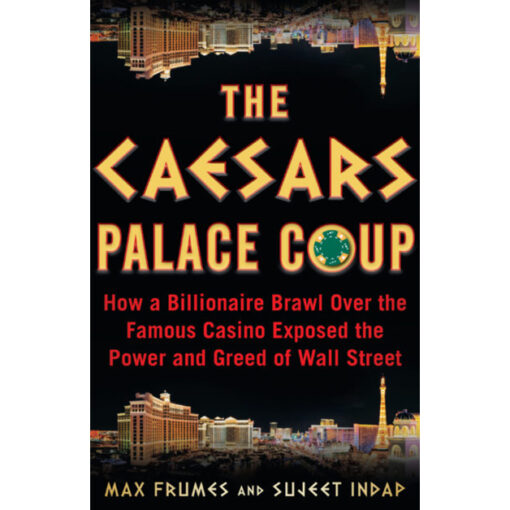[ad_1]
With recession forecasted in many economies this year or next, distressed situations will be an important source of deals for prospective investors.
But what will matter is whether the targets are permanently impaired or can be turned around. Two real-life scenarios from the debt bubble of the early aughts and the ensuing credit crunch provide helpful guidance.
Cyclical Volatility, or Dislocation
The UK investment firm Candover bought the hygienic products producer Ontex for €1 billion, or 8.1 times EBITDA, in 2002. The debt package, composed of bog-standard senior and mezzanine loans, totaled 6 times earnings.
Despite strong economic growth, Ontex’s EBITDA margin dropped from 17% to 12% within three years due largely to rising oil prices. Oil is a key ingredient of the absorbent powder in Ontex’s diapers, and the company could not pass the costs onto customers because their products are distributed by Walmart, Tesco, and other price setters with oligopolistic positions. Unable to ship directly to consumers, and as a private-label manufacturer without a dominant brand, Ontex is a price-taker.
But this wasn’t a new development. In the past, Ontex’s profitability had slumped whenever oil prices spiked. Still, excessive leverage didn’t make Ontex a bad investment. Rather, its debt package had a rigid structure with a set repayment schedule and strict interest margins when market cyclicality demanded more agile lending terms.
When TPG and Goldman Sachs purchased Ontex from Candover in 2010, covenant-light — cov-lite — loans had become plain-vanilla instruments that gave borrowers the flexibility to adapt to such economic dislocation. That was what Ontex needed. As crude oil prices rose more than 160% between early 2016 and late 2018, its EBITDA margins slipped from 12.5% to 10.2%.
Structural Change, or Disruption
But there’s another kind of distress scenario where market shifts are more extensive.
The private equity (PE) firm Terra Firma executed a leveraged buyout (LBO) of the storied record label EMI Music, valued at £4.2 billion, in 2007. Unlike Ontex’s debt structure, EMI’s featured all the tricks in the PE toolkit, including a gracious cov-lite package with unlimited rights to equity cures and abundant EBITDA adjustments. Yet the deal proved disastrous.
The internet revolution had shaken up the recording industry, and for years EMI had struggled to adapt. To turn EMI’s fortunes around, Terra Firma planned to raise capital in the bond markets and secure it against the recurring cash flows of EMI’s music catalogs. It also hoped to restore margins by cutting the workforce, outsourcing some activities, renegotiating artist contracts, rationalizing the property portfolio, and shrinking expense accounts. Terra Firma likewise had its eye on new revenue streams — concerts, online services, merchandising, and artist management — and sought to onboard new tech talent to implement the digital transition.
Yet despite multiple equity cures, EMI’s sole lender, Citi, took it over in 2011 and hastily sold it off piecemeal. EMI, it turned out, was not experiencing a brief dislocation but a permanent disruption. Due to online piracy, US compact disc (CD) shipments had collapsed by two-fifths between 1999 and 2007. In the fiscal quarter preceding the buyout, EMI CD sales had fallen by 20%. Paying over 18 times trailing EBITDA for such a business proved unwise.
Adding leverage to a business facing such severe challenges wasn’t advisable. EMI’s net debt-to-EBITDA ratio remained above 8 throughout the LBO period. The turnaround strategy never improved profitability enough to keep up with the steepening debt commitments.
The Risks Pyramid
EMI’s experience shows how significant execution risk does not mix well with leverage amid a major restructuring. Cost cuts, asset disposals, contract renegotiations, refinancing, securitizations, and other conventional strategic and operating tools are no match for disruptive innovation.
That’s why dislocation cannot be confused with disruption. The former is temporary and cyclical — it is manageable, even when it is recurrent by nature. Disruption, by contrast, is permanent and structural; for many businesses, it is a terminal threat. Whereas dislocation requires adaptation and can be tackled by progressively altering a firm’s strategy, disruption calls for reinvention, in which case a firm must reengineer its operations. In such a fundamental scenario, the extensive use of debt is a very bad idea.
The Risks Pyramid below visualizes this dilemma: Leverage sits atop many other risk categories. Companies have little room for financial risk — i.e., debt — when facing market, operational, and strategic headwinds. Under the weight of so much uncertainty, additional leverage can crush any corporate borrower.
Risks Pyramid Structure
The Great Glut
The unprecedented monetary stimulus in the aftermath of the global financial crisis (GFC) and during the pandemic ought to provide fertile ground for distress investing in the years ahead. Excess capital is frequently misallocated and leads to wasteful and ill-advised investments. It can kill returns.
Debt-bloated buyouts and overcapitalized start-ups are plentiful, but thanks to capital accumulation — $12 trillion of assets, including $3 trillion in dry powder — private markets may take a long time to adjust. Following its March 2000 peak, the NASDAQ did not hit bottom until October 2002, and many dot-coms were still reeling when the GFC broke out. Today’s private market shakeout may entail a similarly extended wait. PE and venture capital (VC) firms would prefer to hold onto impaired assets and keep earning fees rather than acknowledge the true state of their portfolios. Yet with recent bank collapses, the bridge financing that start-ups need to postpone any down round may dry up.
With their avid use of leverage, financial sponsors can still manage downside risks by negotiating looser loan agreements and massaging numbers. Too much debt, however, can leave borrowers in a zombie state and make it harder for distress investors to step in. They might have to wait it out like Citi did amid EMI’s inescapable disintegration in the wake of the GFC.
Dealing with Market Fracture
The financialization of the markets raises a broader question: Does the growing debt overhang represent temporary turbulence or a more radical discontinuity of modern economies?
The cost of a stretched balance sheet varies: Businesses cut investments; credit downgrades drag down stock returns; corporate executives seek alternative employment; workers become uncooperative; suppliers drive tougher payment terms; clients switch to more reliable service providers; lenders raise the cost of debt or cut off access to credit altogether.
Even if endemic overleverage does not lead to widespread economic destruction, dislocation-prone industries could eventually become more permanently impaired. Today’s elevated inflation, for instance, could be considered just a minor hurdle for Ontex: As oil prices rose from less than $0 per barrel in 2020 to more than $120 two years later, the company’s EBITDA margins tumbled from 11.2% in 2020 to 5.5% last year. Leverage now exceeds 6 times earnings, as in the days of the Candover LBO 20 years ago, when EBITDA margin stood at 17%.
But the COVID-19 pandemic has provoked demographic instability that could have far deeper ramifications for companies like Ontex, which serves both the young and the elderly by selling diapers and incontinence products. Excess mortality has jumped in Europe and the United States. This trend may be short-lived, but it follows stalling life expectancy in the United States, the European Union, and England and Wales. The benefits of improved sanitation and public health have, perhaps momentarily, reached their limits.
The pandemic also catalyzed another demographic evolution. Rather than an anticipated COVID-19 baby boom, lockdowns may have contributed to a “baby bust.” While post-COVID-19 economic stimulus helped birth rates rebound to pre-pandemic levels, demographic challenges remain. In struggling economies like Japan, Spain, and Italy, declining fertility rates have long been the norm. But if shifting birth rates and flatlining life expectancy become further entrenched, they would not represent mere dislocations, like periodic oil price spikes, but more acute market fractures affecting long-term demand for hygienic products.
The ramifications would clearly extend far beyond any one company or sector. Therein lies the trouble with investing. Markets are dynamic: Macroeconomic turbulence and sociodemographic transitions can transform value plays into distressed assets.
If you liked this post, don’t forget to subscribe to the Enterprising Investor.
All posts are the opinion of the author(s). As such, they should not be construed as investment advice, nor do the opinions expressed necessarily reflect the views of CFA Institute or the author’s employer.
Image credit: ©Getty Images / SDI Productions
Professional Learning for CFA Institute Members
CFA Institute members are empowered to self-determine and self-report professional learning (PL) credits earned, including content on Enterprising Investor. Members can record credits easily using their online PL tracker.
[ad_2]
Source link











 Bitcoin
Bitcoin  Tether
Tether  XRP
XRP  USDC
USDC  Lido Staked Ether
Lido Staked Ether  Dogecoin
Dogecoin  LEO Token
LEO Token